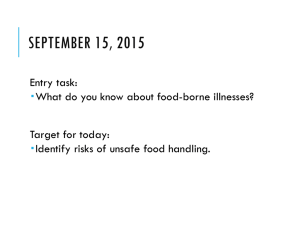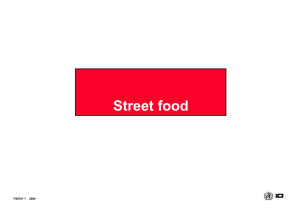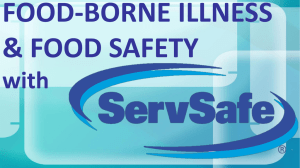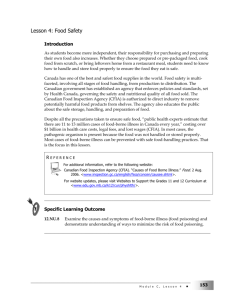FBI Notes
advertisement
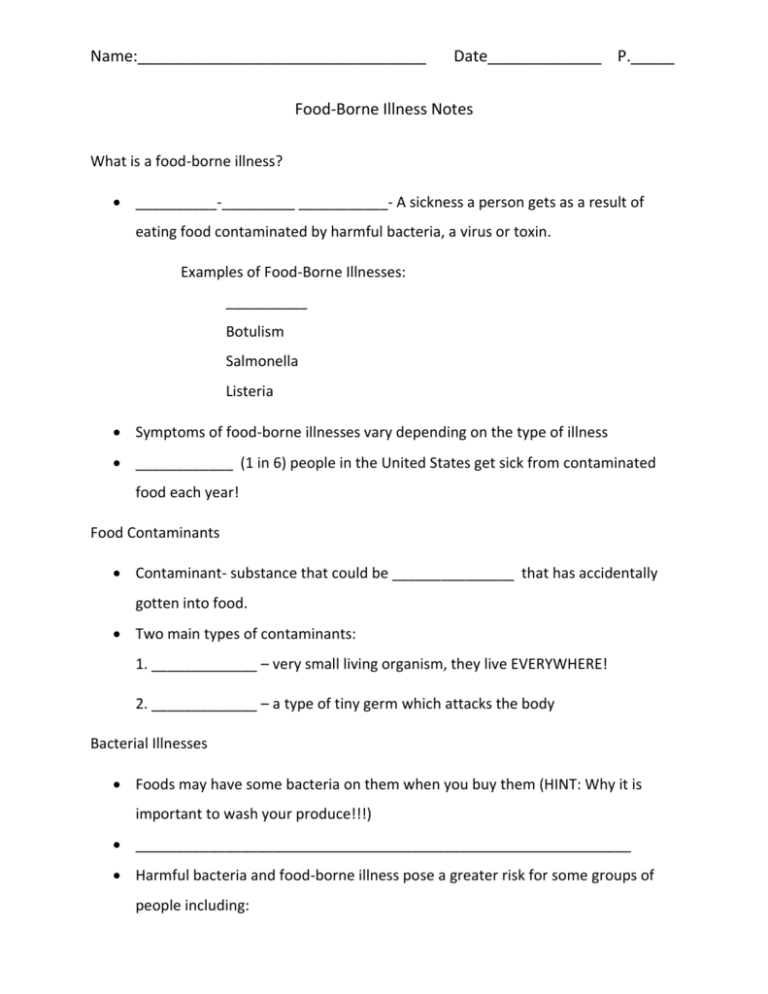
Name:_________________________________ Date_____________ P._____ Food-Borne Illness Notes What is a food-borne illness? __________-_________ ___________- A sickness a person gets as a result of eating food contaminated by harmful bacteria, a virus or toxin. Examples of Food-Borne Illnesses: __________ Botulism Salmonella Listeria Symptoms of food-borne illnesses vary depending on the type of illness ____________ (1 in 6) people in the United States get sick from contaminated food each year! Food Contaminants Contaminant- substance that could be _______________ that has accidentally gotten into food. Two main types of contaminants: 1. _____________ – very small living organism, they live EVERYWHERE! 2. _____________ – a type of tiny germ which attacks the body Bacterial Illnesses Foods may have some bacteria on them when you buy them (HINT: Why it is important to wash your produce!!!) _____________________________________________________________ Harmful bacteria and food-borne illness pose a greater risk for some groups of people including: infants, pregnant women, older adults and people with impaired immune systems Bacterial Illnesses [continued] Symptoms may appear _______________ or many ___________after eating contaminated food Common symptoms are: abdominal cramps, diarrhea, fatigue, ____________, fever and vomiting Typically last for a few days, but can last a week or longer Viral Infections Cause about one half (50%) of the cases of food-borne illness Food-borne viral illnesses usually last 1 – 3 days Symptoms similar to bacterial illness How are Foods Contaminated? Cross contamination! – occurs when bacteria or a virus on one food/person is transferred to another food Three main ways cross contamination can occur: 1. Food to __________ 2. Equipment to Food 3. ____________ to Food Other Ways Foods are Contaminated Contaminated while growing Contaminated during processing (slaughter or washed with bad water) Food left out, unrefrigerated or stored improperly Food not _________________ thoroughly! Inadequate __________________________! After we discuss each of the following statements circle the correct answer: Safe or Unsafe 1. Use same cutting board and same knife to cut fresh vegetables and raw meat? Safe Unsafe 2. Use different cutting board and same knife to cut fresh vegetables and raw meat? Safe Unsafe 3. Is it ok to store raw chicken on the top shelf of a refrigerator with other produce and foods underneath on a separate shelf as long as the chicken is in a sealed bag? Safe Unsafe 4. Touching raw meats and then preparing vegetables without washing hands between tasks Safe Unsafe 5. Using a wet washcloth to clean off an area where raw meat was placed and the washing the rest of the counter Safe Unsafe 6. Using a clean knife to cut open a package of raw hamburgers and then cutting the sandwich you made for lunch? Safe Unsafe 7. Using the restroom in between cooking tasks and not washing your hands before returning to cooking. Safe Unsafe 8. Leaving your raw chicken on the counter to thaw all day while you are at school Safe Unsafe Remember How Bacteria and Viruses Spread Cross Contamination: 1. Food to food 2. Equipment to food 3. People to food Not washing hands Improper ways of storing food Not cooking to correct temperature Cook Thoroughly Use meat thermometer to check temperatures. Always keep hot foods __________and cold foods _____________. Handle Food Properly Prepare foods as directed and properly clean them. Clean your hands, utensils and ___________________ before and during cooking What are things you should remember when preparing foods? i.e., fruits, vegetables, meats such as chicken, beef, dairy products? What Conditions Encourage Bacteria to Grow? 1. Oxygen 2. Moisture 3. ___________________________ Store Food Properly Store food at correct temperatures. Know the Danger Zone for certain foods! The Danger Zone is the temperature range of ____° - ______° F. where certain foods could begin to develop harmful bacteria. Don’t keep these foods longer than _______________ at room temperature. What foods should not be kept in the Danger Zone for too long? Proper Food Storage… Think about the refrigerator Store foods ready to eat on the top and raw foods near the bottom. WHY?
